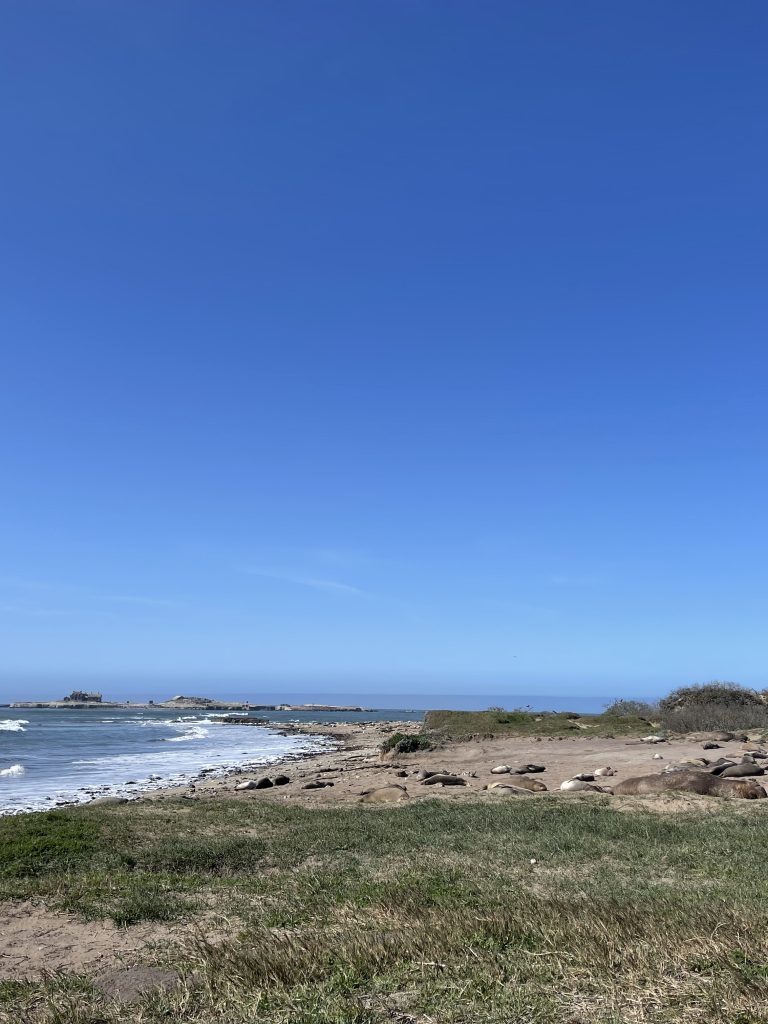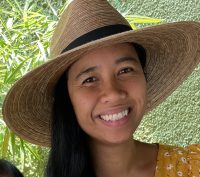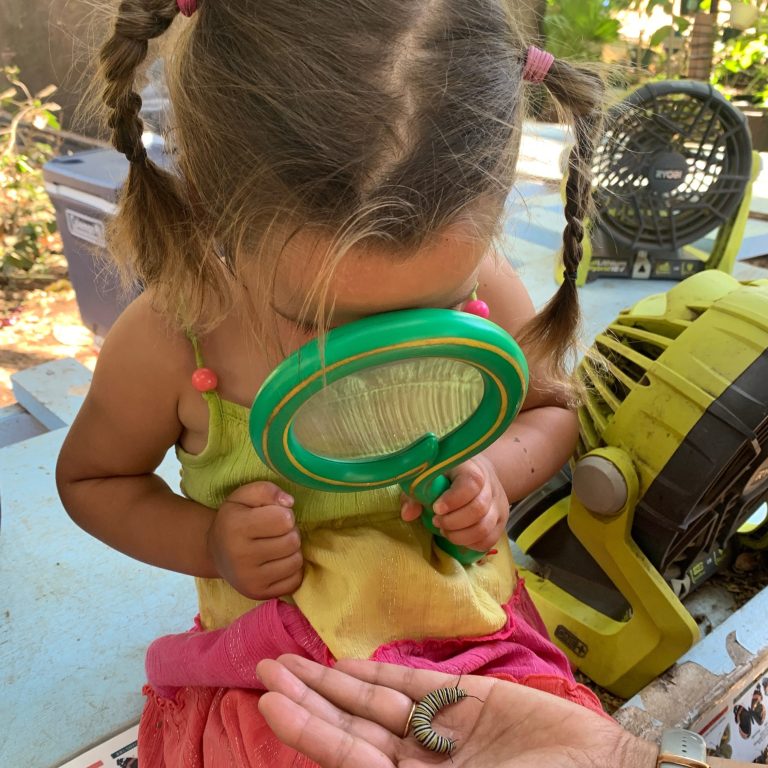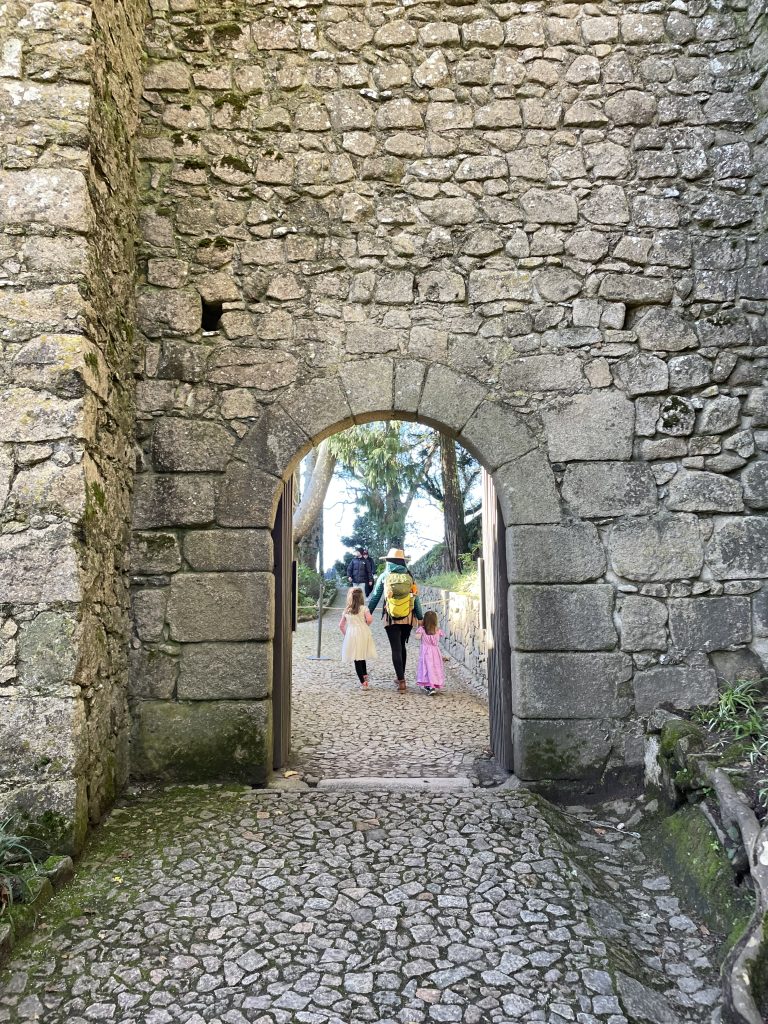One of the wonderful things about visiting the California Coast is the opportunity to witness the diverse array of sea life that live in its waters and beaches. From dolphins to whales, and crabs to sea anemone, seeing the creatures of the deep always leaves me in awe.
One place to be wowed by sea life is Año Nuevo State Park located in Pescadero (see our guide here), less than a two hours’ drive from the East Bay Area. The park is home to “one of the largest mainland breeding colonies in the world for the northern elephant seal.” Each season offers visitors unique looks into the lives of northern elephant seals—characterized by their long noses—which were all but extinct by the 1880s due to sealers.
Seeing the seals requires a moderate 4-mile roundtrip hike down to the beach, through ocean bluffs and sand dunes, but if you and your family are up for it, you will certainly enjoy this unique adventure!
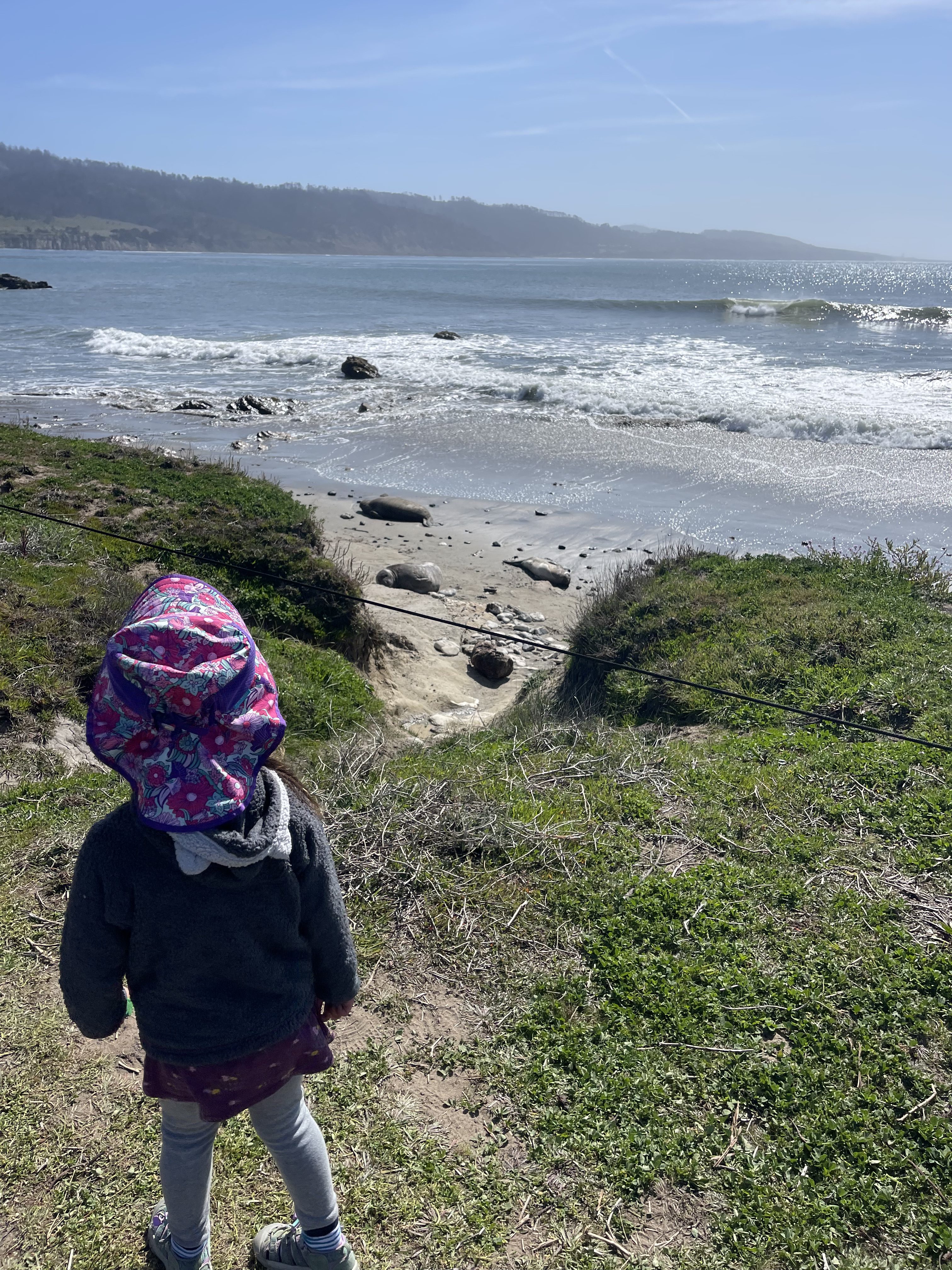
Año Nuevo State Park is located on the stolen and occupied lands of the Costanoan Ohlone tribe.
Trip Purpose
To see the elephant seals during the breeding season (winter) as well as the molting season (summer)
BASE COST
- Gas & Transportation
- $10/vehicle entrance fee
- ~$11/person age 5+ ($7 guided seal walk + $4 registration fee) during breeding season (Dec-Mar)
Add-Ons
- Meals & snacks
About Our Visit
AGE OF THE KIDS: 2-5 years
LENGTH OF VISIT: ~4+ hours (plus travel time)
TIME OF YEAR: Early Spring & Summer
DAY OF THE WEEK: Friday & Saturday

Top Tips to Make the Most of Your Visit
Before You Go
- Decide when to visit. See our recommendations below!
- If visiting during the breeding season (December-March), you must reserve a guided tour in order to see the elephant seals.
- Check the weather before you go to ensure you’re wearing the right layers. The weather on the California Coast can be unpredictable.
- Download your kids’ favorite music playlists for offline use—you’ll thank us later.
What We Packed
- Standard diaper bag essentials
- Standard hiking essentials (especially water, hats, and sunscreen)
- Binoculars
- Ergobaby or soft baby carrier, or hiking backpack, if needed
- Snacks (especially for the hike!) and/or packed lunch, if desired

Time Your Visit
Each season is different at Año Nuevo, so it’s helpful to know what season the elephant seals are in so you can better plan your visit. Breeding season occurs December through March, while molting season is April through August. For the remainder of the year the juvenile seals hang out on the beach while the older seals leave for the season to feed.
We’ve visited during breeding season and molting season and, while we’re certainly not experts, we found there to be a greater number of seals and more activity during the former. That said, you may want to avoid the breeding season so that you (and your littles!) can hike at your own pace, rather than have to keep up with the required docent and the rest of the tour group.
To get a preview of the state of the seals, check out the Año Nuevo Island Live Stream, which is available 8 a.m. to 5 p.m Pacific!
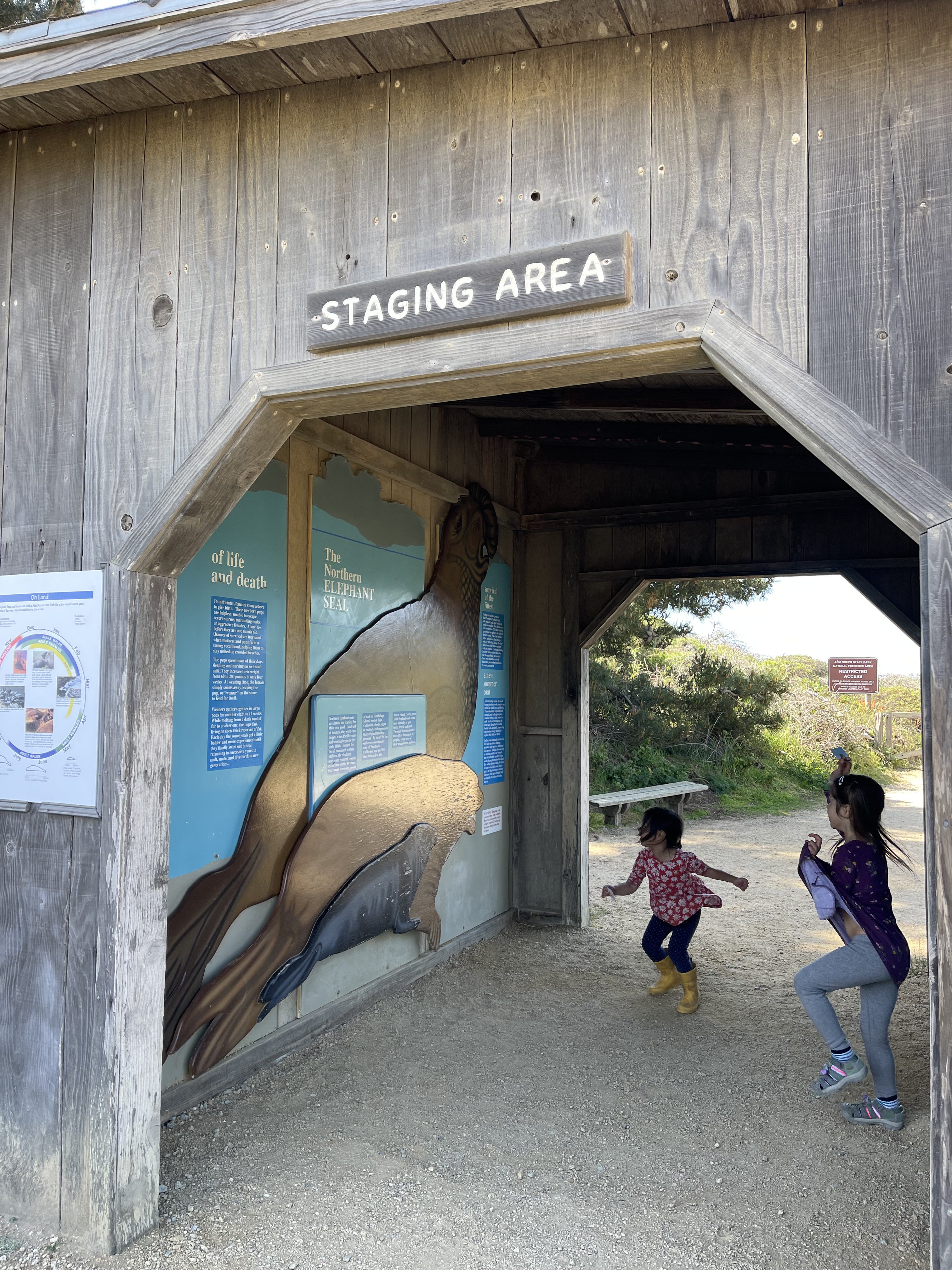

Arrive Early
This is especially difficult for someone like me who is always running on Pilipinx/POC-time, but is especially important if doing a timed tour, as the group may forge ahead without you. It also helps to get there early if you’re trying to fit the hike in before naptime, as you’ll give yourself the maximum window to complete the hike and be back to the car for a rest!
Regardless of whether or not you have a reservation, when you arrive, you need to check in with the rangers at the Marine Education Center (white barn-looking building) near the parking lot and picnic areas in order to obtain the free permits that will allow you to enter the Año Nuevo Coast Nature Preserve, which is the protected land upon which you can view the elephant seals.
Prepare to HIKE
While I wouldn’t classify the ~4-mile roundtrip hike as challenging, there were challenging aspects to it. First of all, this is probably on the edge of how far the 5-year-old kids in our group were willing to hike without massive amounts of complaining (and this is even with copious amounts of snacks and their favorite music blasting from our phones). We clocked in at about 3 hours, which included snack breaks and viewing of the seals.
Secondly, the sand can bog you down, both physically and mentally—once we reached the sand dunes about two-thirds of the way through the hike, like clockwork the kids in our group plopped down and immediately started digging and playing. It was very cute, but not when we were trying to keep up with the docent…
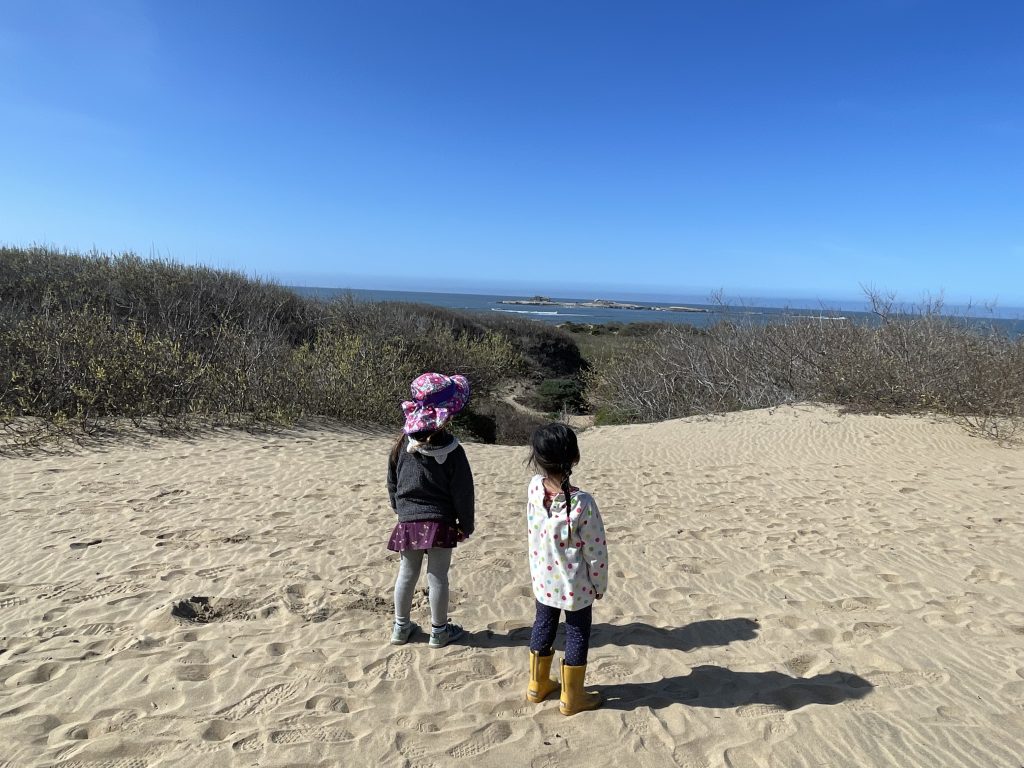

The hike is very lovely, though! The first half takes you through native greenery and moss-covered trees along a gravel path with views of the Pacific Ocean in the distance. Then, a boardwalk leads you to the sandy dunes. Up until that point you could theoretically bring your little one in a stroller, but you’ll have to leave the stroller once you get to the sand. There are a couple steep, sandy hills for you to pass before you make it down to the beach viewing areas. On the hike back, you’ll get to see the fog roll in and past the lovely nearby mountains!
Choose Your Viewing Area(s)
Since we had to be sure the kids reserved enough energy for the 1.5-mile hike back to from the beach to the parking lot, we were limited in the number of viewing areas we could visit, as each stop would require that many more steps from our little ones. Based on our two visits, we would recommend the two closest viewing areas at South Point and Bight Beach (see photos).
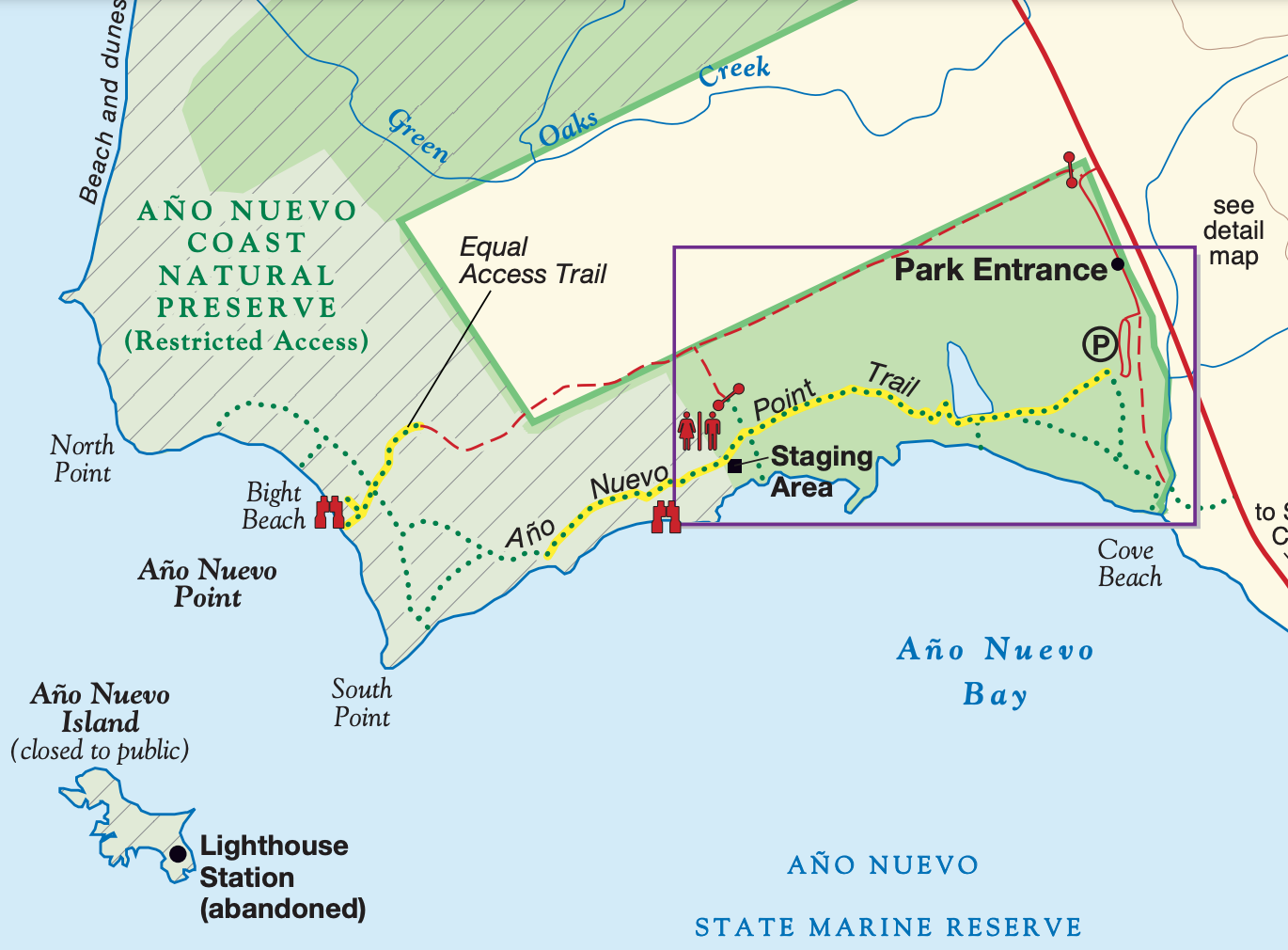
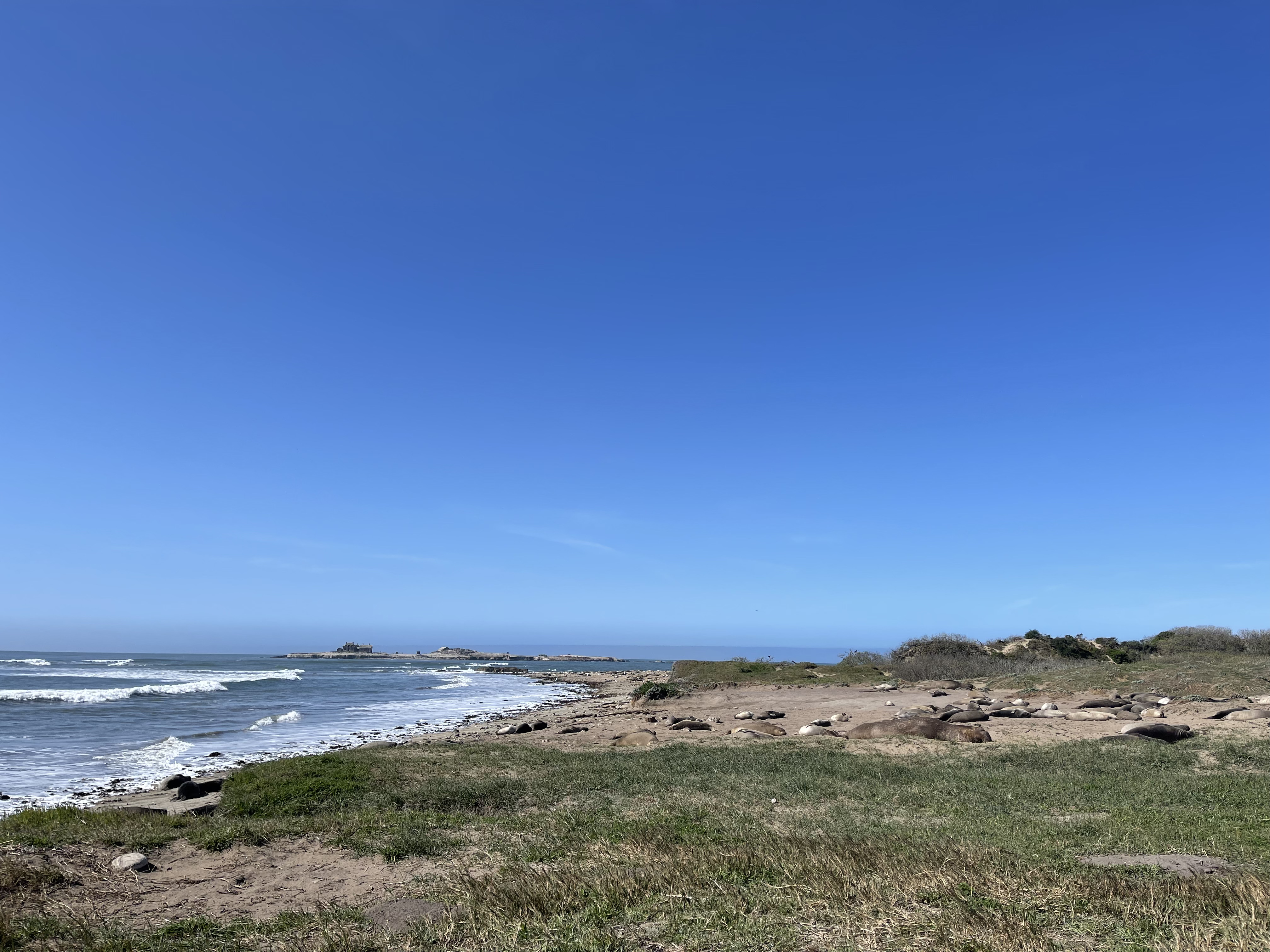
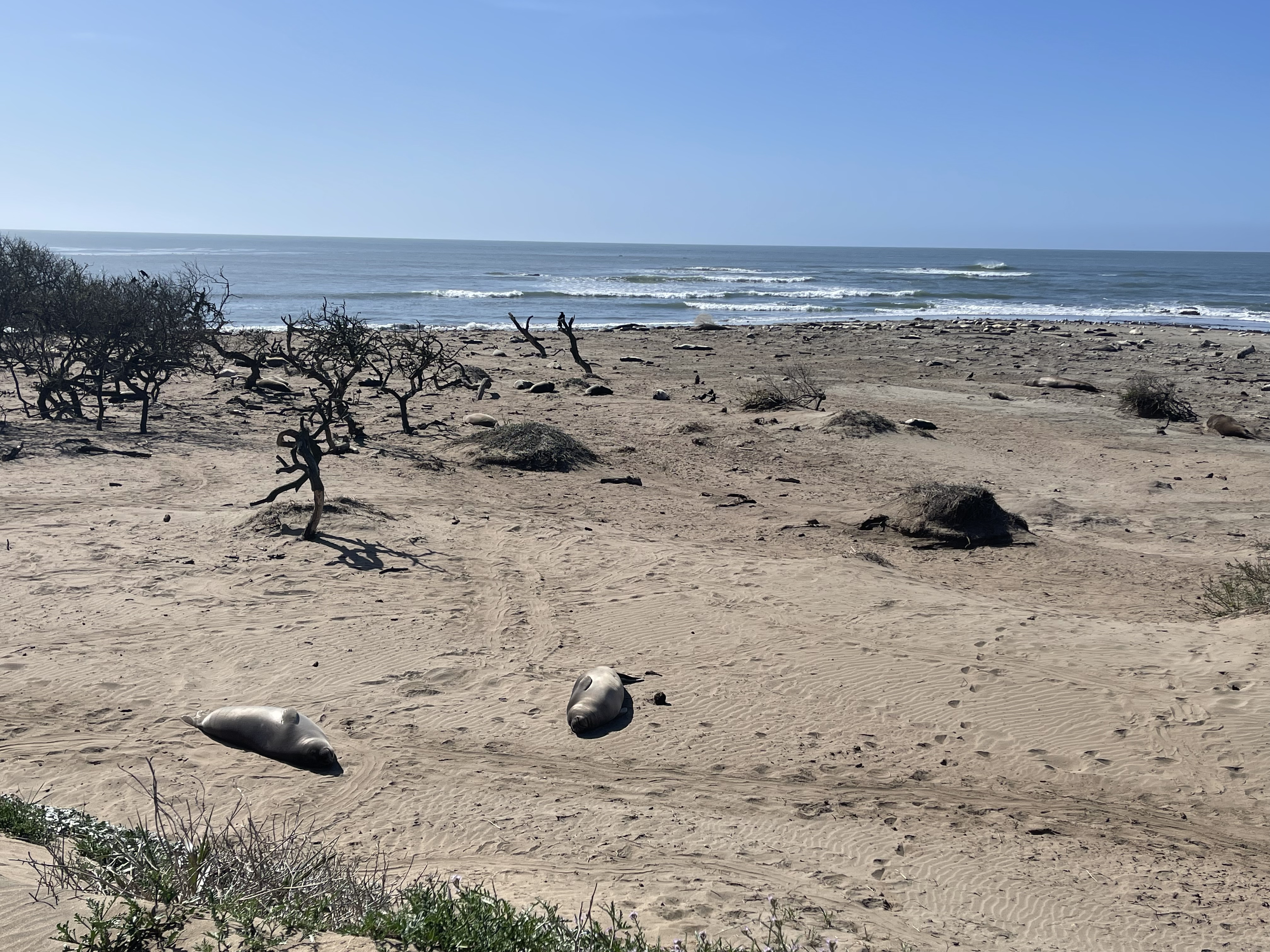
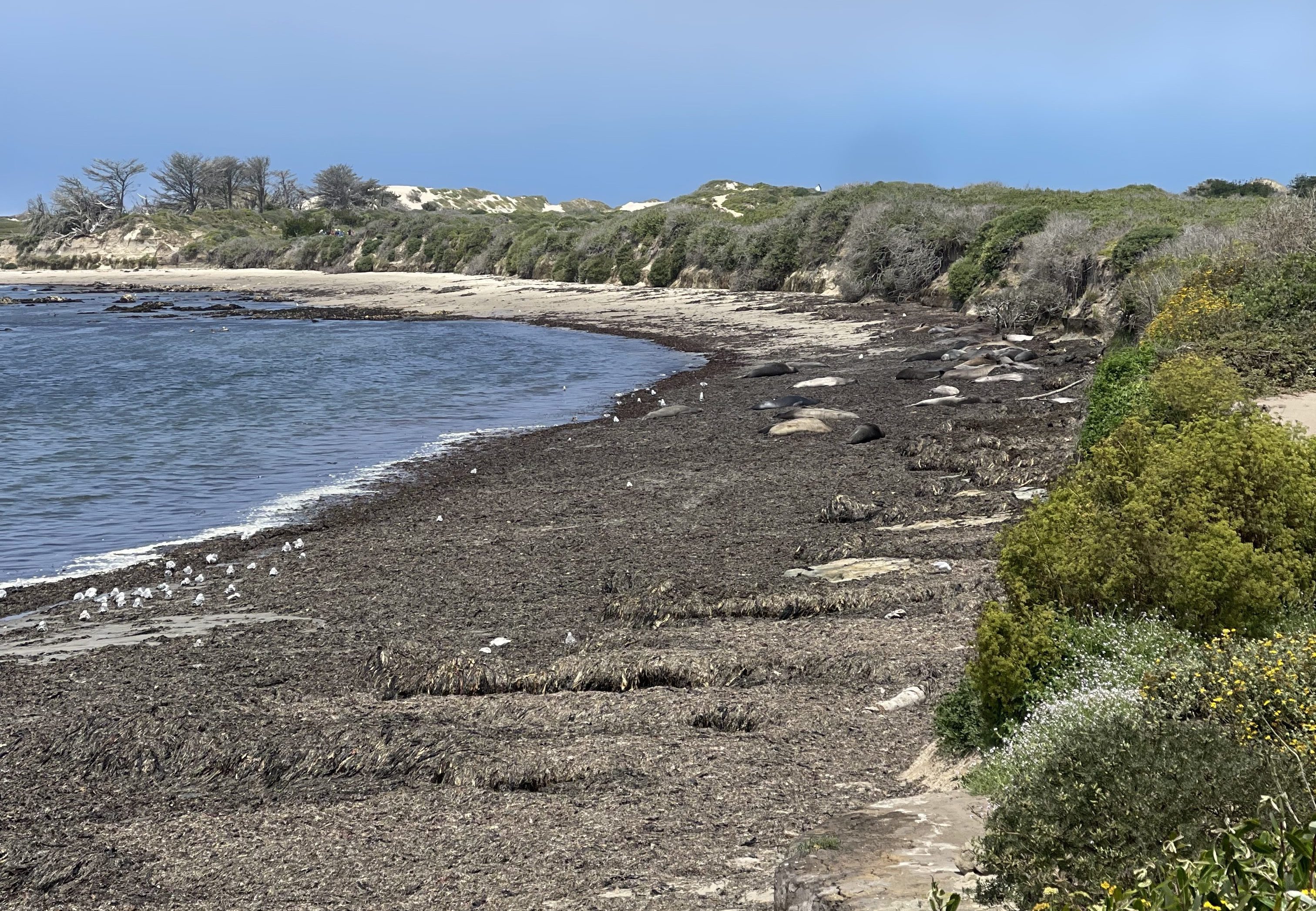
South Point was my favorite, since during our March visit there were numerous elephant seals lying about with the view of the abandoned light station on Año Nuevo Island in the background. The Bight Beach viewing area has one of the most direct views of Año Nuevo Island, but since the viewing area is situated on the boardwalk, the elephant seals are much further away. We never made it to North Point, though the docent highly recommended it—let us know if it’s worth the extra trek!
Keep Your Distance
For your safety you are required to keep at least 25 feet between you and any surrounding elephant seals. There are numerous ropes that indicate where you are allowed to stand to view the elephant seals.
While it wasn’t too common on our hike, we did see a couple elephant seals sleeping and hanging out near the trail, so it’s best to be on the lookout for any stray seals nearby!

Use those binoculars!
We made the mistake of only two pairs of binoculars to share among our group of 11 kids and adults, but let’s just call this a successful lesson on sharing! We managed to take turns, with some prodding, in order to see with better clarity the elephant seals on the beach, as well as the sights on nearby Año Nuevo Island: more elephant seals, Steller sea lions, birds, and the abandoned lighthouse station from the late-1800s.
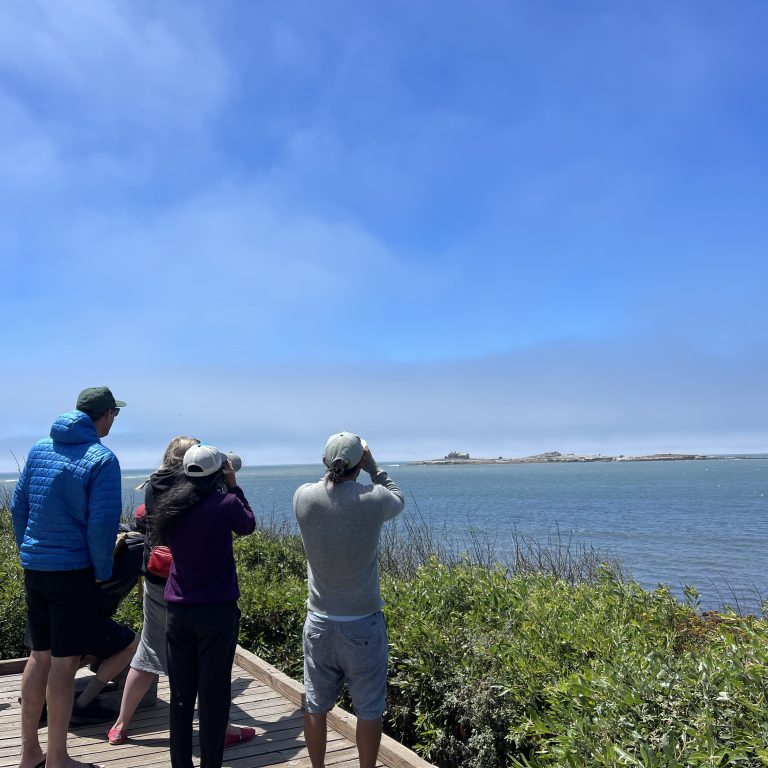
Interact with Exhibits at the Staging Area
The Staging Area is a barn located at the trailhead of the Año Nuevo Coast Nature Preserve, about halfway from the parking lot to the elephant seal viewing areas. This was a great last stop for a bathroom and snack break before carrying on to the sand dunes.
We all enjoyed the exhibits of animal bones and shed fur, while also getting to talk to the docents and rangers who answered all of our questions and provided some extra guidance about where best to view the elephant seals.
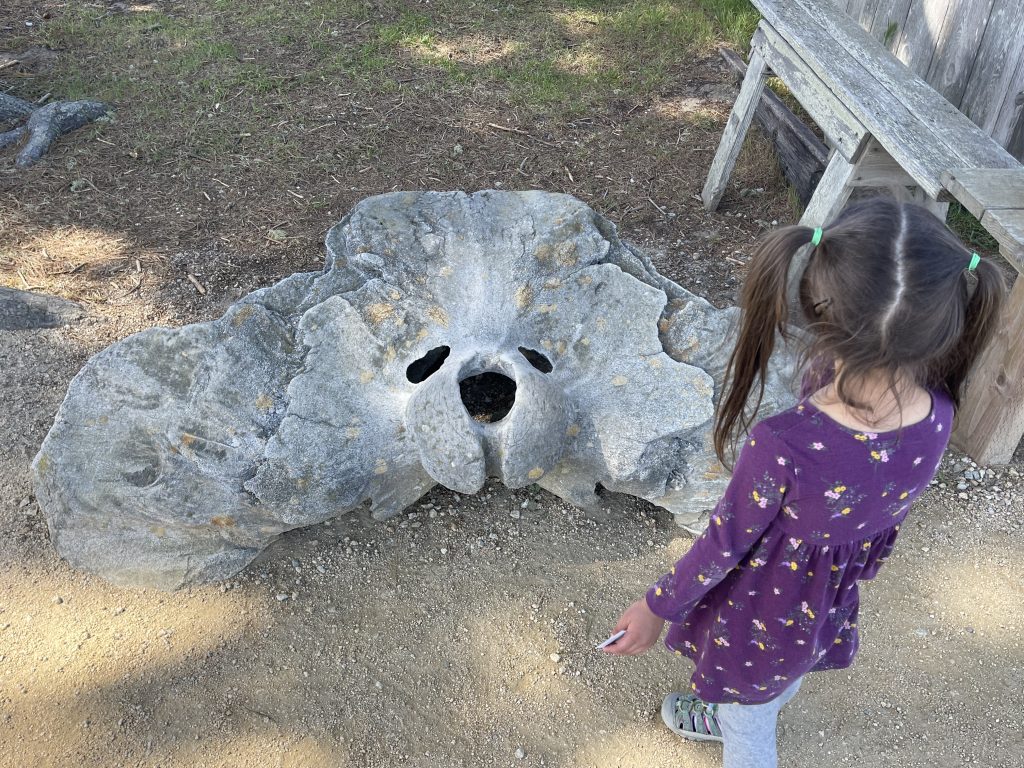

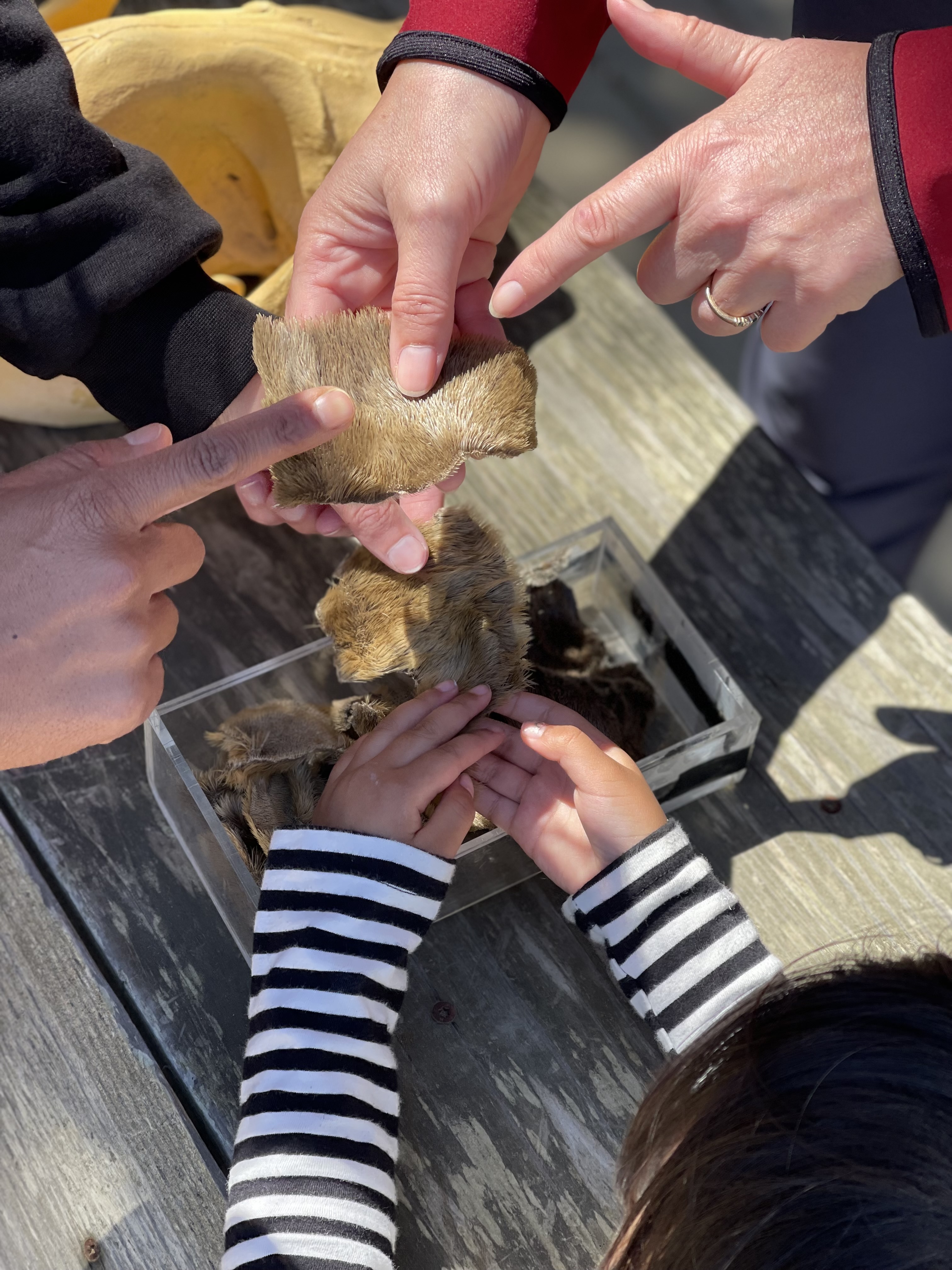
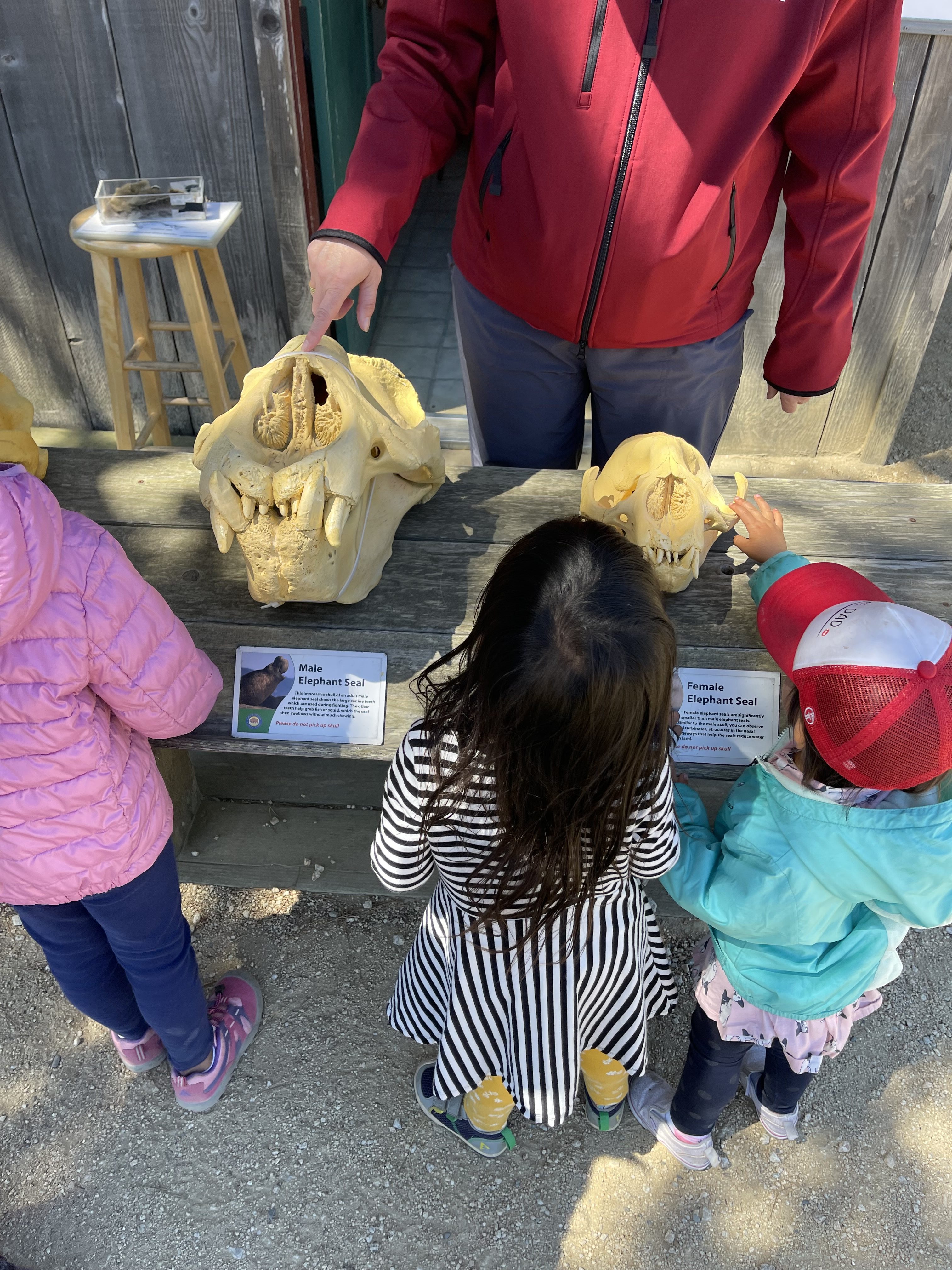
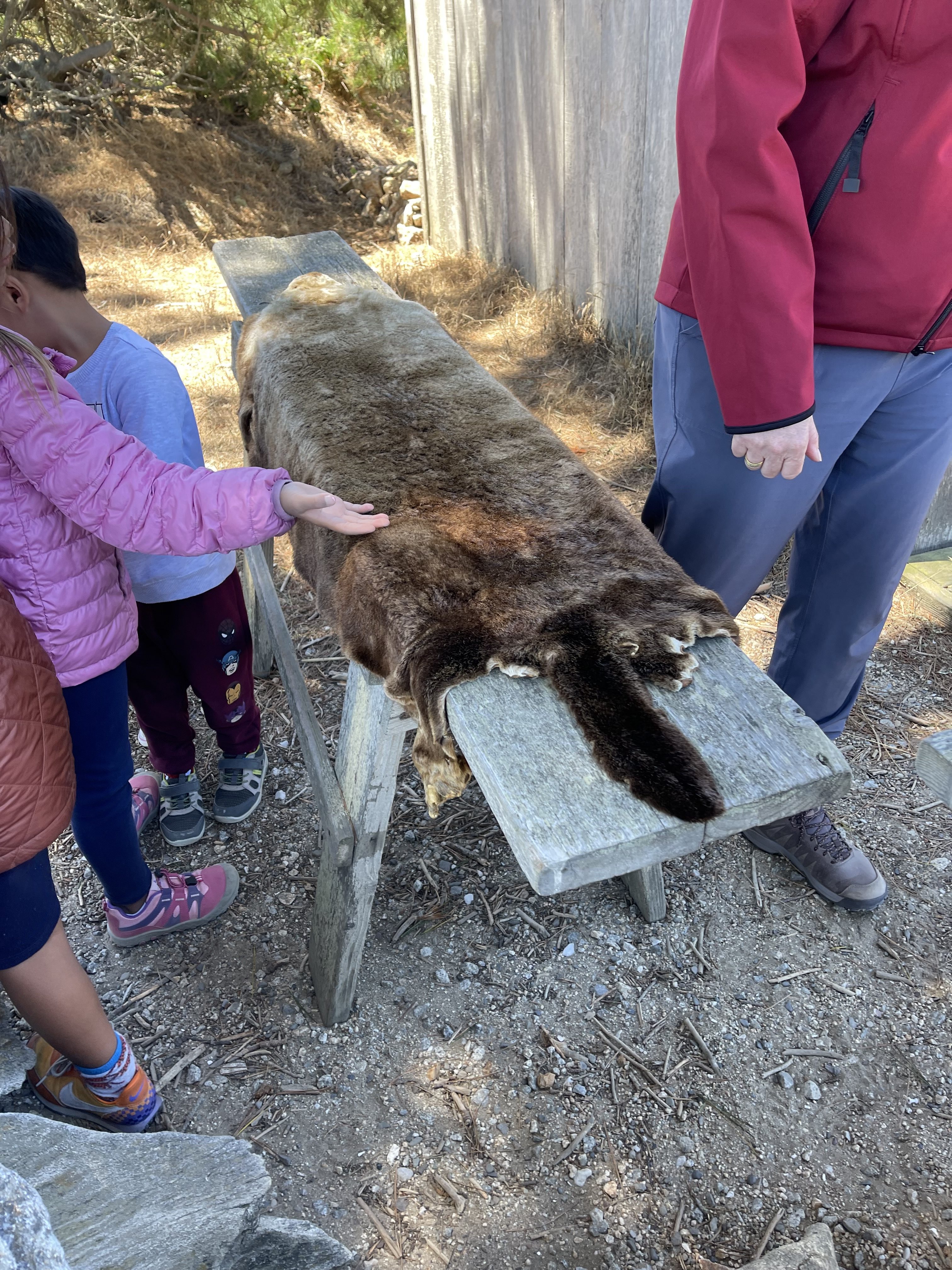
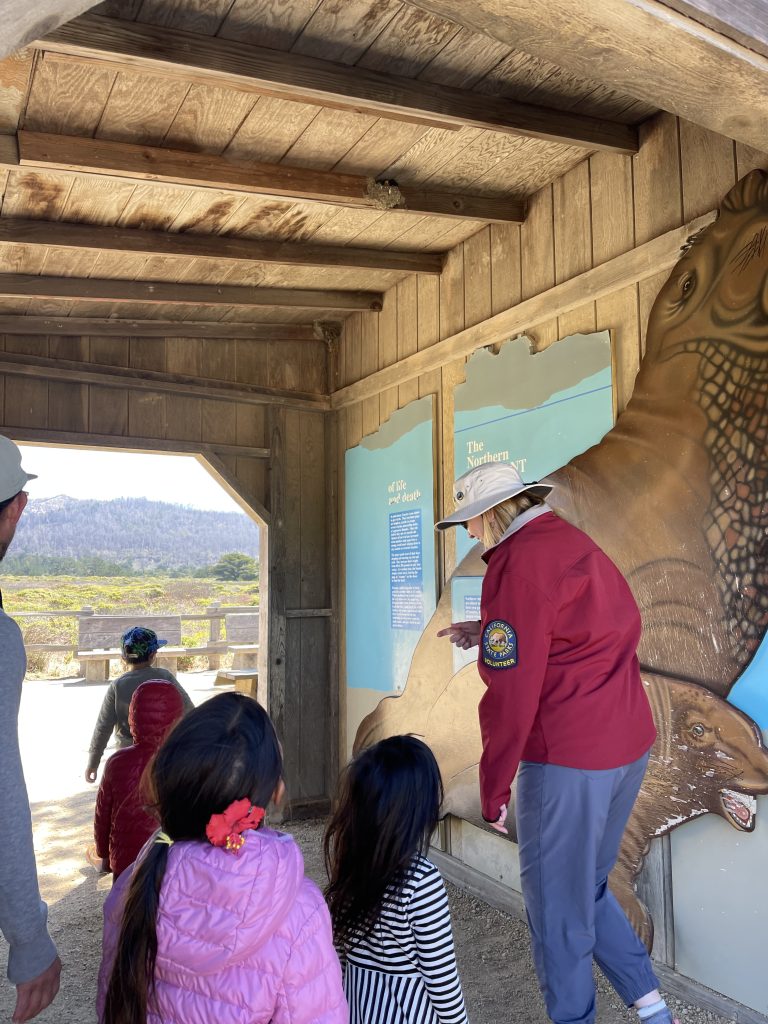
Be on the lookout for other critters!
We had fun seeing rabbits, lizards, fuzzy caterpillars, and other wildlife during our hike. One of our highlights was getting to see a mama swallow feed her babies, who were sitting in their mud nest in the interior of the Staging Area structure. We were mesmerized watching the baby birds all open wide while the mama popped her prey into their beaks!
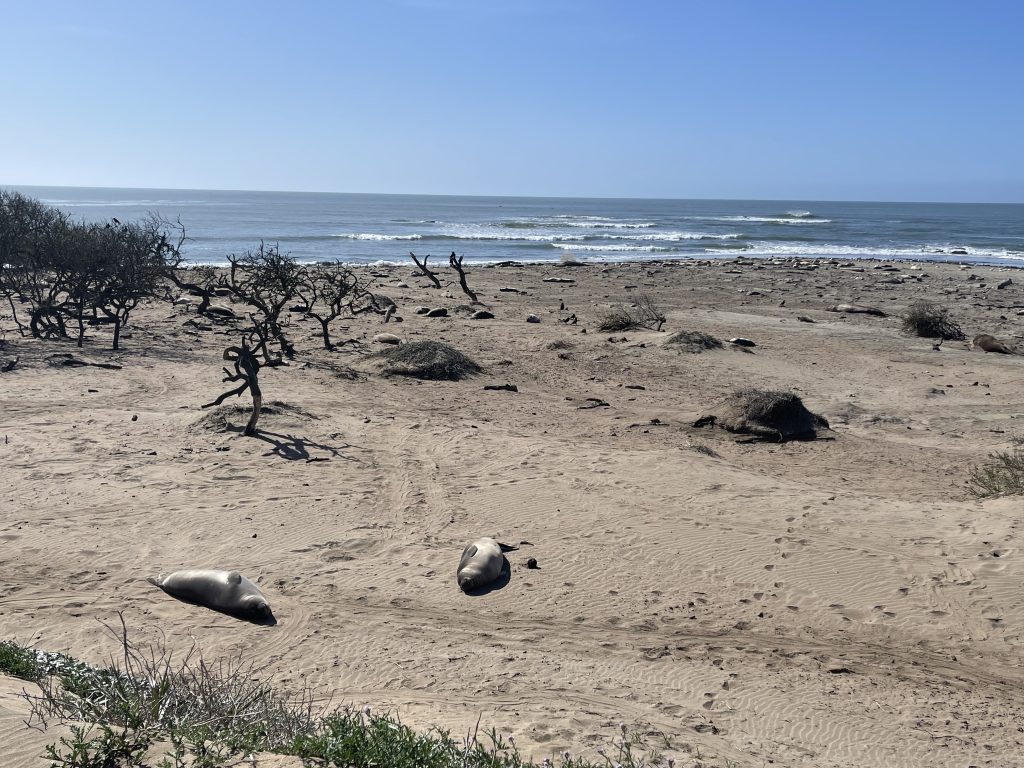
Año Nuevo and the other attractions in Pescadero make for a great day trip or weekend excursion with your family. It was great to give our kids access to this amazing nature preserve full of unique wildlife (and a great hike, to boot!). Plus, we enjoyed seeing the diverse groups of tourists and visitors making the trek up and down the beach.
Have you and your family visited Año Nuevo State Park? Let us know about your experience in the comments!
Angelica (she/her) is of Cebuano(Pilipinx)-descent and was born and raised in Huchiun Ohlone territory (the East Bay Area--pay your Shuumi Land Tax!), where she also now resides with her partner and their toddler. She loves to spend her time sipping on boba and dirty chai lattes (sometimes together), and eating pescetarian goodies at BIPOC-owned cafes and restaurants.
- Angelicahttps://beautifulbrownadventures.com/author/jellyeatsfishy/
- Angelicahttps://beautifulbrownadventures.com/author/jellyeatsfishy/
- Angelicahttps://beautifulbrownadventures.com/author/jellyeatsfishy/
- Angelicahttps://beautifulbrownadventures.com/author/jellyeatsfishy/
You might also enjoy
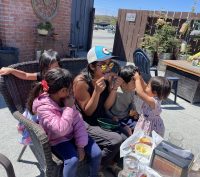 The BBA Guide to Visiting Pescadero with Kids
The BBA Guide to Visiting Pescadero with Kids
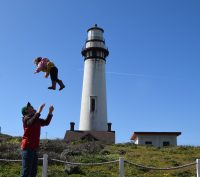 How to Stay at the Pigeon Point Lighthouse Hostel with Kids
How to Stay at the Pigeon Point Lighthouse Hostel with Kids
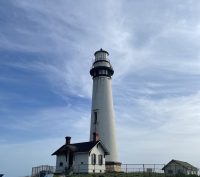 How to Visit the Pigeon Point Lighthouse with Kids
How to Visit the Pigeon Point Lighthouse with Kids
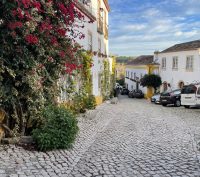 A Portugal Family Road Trip: 14-Day Itinerary of Kid-Friendly Wonders and Cultural Delights!
A Portugal Family Road Trip: 14-Day Itinerary of Kid-Friendly Wonders and Cultural Delights!
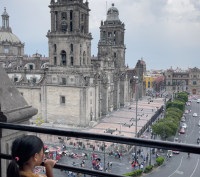 A Family-Friendly Guide to Mexico City: Top 10 Activities with Sample Itineraries
A Family-Friendly Guide to Mexico City: Top 10 Activities with Sample Itineraries

